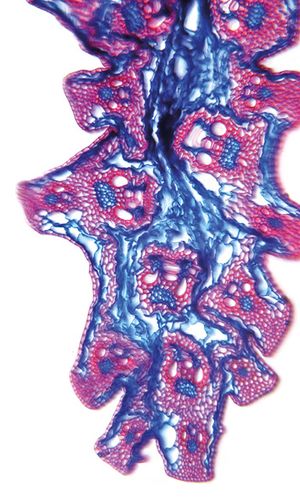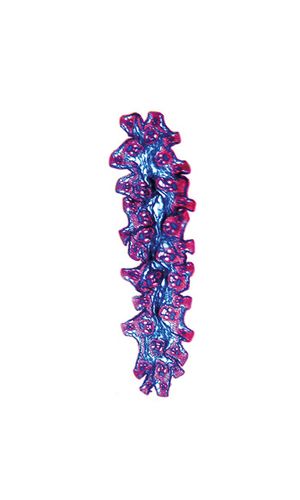Eleusine indica (L.) Gaertn.
1016340
Species
ISFS : 146100
Checklist : 1016340
ISFS : 146100
Checklist : 1016340
Contains :
Synthesis
Species description (© Flora Helvetica 2018)
20-80 cm hoch. Stängel flach. Blätter blaugrün, 3-6 mm breit, mit kurzer, stumpfer Spitze, meist gefaltet. Blatthäutchen ca. 1 mm lang. Blattscheiden mit wenigen, bis 5 mm langen Haaren. Blütenstand aus 2-7 strahlig angeordneten, 3-10 cm langen Ähren. Ährchen einseitswendig, 4-7 mm lang, 3-7blütig. Hüllspelzen scharf gekielt, die untere kürzer als die obere. Deckspelzen 2,5-4 mm lang.Flowering period (© Flora Helvetica 2018)
7-10Habitat and distribution inside Switzerland (© Flora Helvetica 2018)
Ödland, Schuttplätze, Äcker / kollin / BA, TI, VD, ME, GR (Misox) eingebürgertWorld distribution (© Flora Helvetica 2018)
Ursprünglich tropisch-subtropischEcological indicator (© Landolt & al. 2010)
2w34-452.t.2n=18,36Status
IUCN status
flora.fl.National Priority
--International responsibility
--Conservation
Threats
Anatomy
Summary of stem anatomy (German)
Umriss rund mit Rippen. Leitbündel in mehreren Reihen. Konische Stützen. Epidermiszellen verholzt. Chlorenchyma in tangential verlängerten Gruppen.Description
Culm-diameter 1-2 mm, wall thin, radius of culm in relation to wall thickness approximately 1:0.25 or < 0.25. Outline circular, with rips. Culm-center hollow and surrounded by many large thin-walled, not lignified cells. Epidermis-cells thin-walled all around. Large vascular bundles arranged in one peripheral row. Chlorenchyma in tangentially enlarged groups. Sclerenchyma in a large, peripheral continuous belt (> 3 cells). Cells medium thick-walled. Girders square, rectangular or conic. Sclerenchymatic sheath around vascular bundles large, 3 to x cells. Largest vessels in vascular bundles in lateral position. Largest vessel in the bundle 20-50 μm. Artifacts on material from herbaria, e.g. compressed and deformed culms or exaggerated distinct rips.Distribution map
Habitat and distribution inside Switzerland
BA, TI, VD, ME, GR (Misox) eingebürgertWorld distribution
Ursprünglich tropisch-subtropischEcology
Life form
Therophyte
Habitats
Milieux Phytosuisse (© Prunier et al. 2017)
Habitats © Delarze & al. 2015
| NO INFORMATION |
bold
Dominant species, influencing the appearance of the habitat
 Character species
Character species
 Less strictly linked to a specific habitat
Less strictly linked to a specific habitat
Ecological indicator values by © Landolt & al. (2010)
| Soil factors | Climatic factors | Salinity tolerance | |||
|---|---|---|---|---|---|
| Humidity Value H | 2w | Light Value L | 4 | Salinity Index | -- |
| Reaction Value R | 3 | Temperature factor T | 5 | ||
| Nutriments value N | 4 | Continentality K | 2 | ||
- Ecological values legend
Humidity Value H 1 very dry 1+ dry 2 moderatly dry 2+ moist 3 medium wet 3+ wet 4 very wet 4+ soggy 5 submerged or underwater f plants living in running water u mostly submerged plants v partly submerged, partly floating plants w humidity moderately variable (± scale of 1-2) w+ highly variable humidity (scale exceeding ± 2) Reaction Value R 1 Very acid (pH 2.5-5.5) 2 acid (pH 3.5-6.5) 3 lightly acid to neutral (pH 4.5-7.5) 4 neutral to basic (pH 5.5-8.5) 5 basic (pH 6-5 -> 8.5 Nutriments value N 1 very low in nutrients 2 low in nutriments 3 medium-poor to medium-rich in nutrients 4 rich in nutriments 5 very rich in nutriments Salinity tolerance 1 halotolerant 3 halophyle Light Value L 1 very shady 2 shady 3 lighted areas 4 luminous 5 highly luminous Temperature factor T 1 alpine to nival stages (from the treeline to the snowline) 1+ suprasubalpine and upper subalpine levels (pine and larch forests) 2 subalpine level (coniferous forests without beeches up to the upper limit of spruces) 2+ lower subalpine and upper mountain stages 3 mountain level (beech and silver fir forests, in the central Alps Scots pine forests) 3+ lower mountain and upper hill levels 4 hill level (mixed deciduous oak forests) 4+ hot places, hill level 5 very hot places, hill level (only in the hottest places, typical of southern Europe) Continentality K 1 Atlantic (high air humidity, very low temperature variations, mild winters) 2 Sub-Atlantic (high air humidity, low temperature variations, relatively mild winters) 3 sub-Atlantic to subcontinental (average air humidity, moderately variable temperature, slightly low winter temperatures) 4 subcontinental (low air humidity, large temperature variations, rather cold winters) 5 continental (very low air humidity, very large temperature variations, cold winters)
Water dependency
| Rivers | |
| Calm water | |
| Ground water |
Nomenclature
Accepted Name (Checklist 2017)
Eleusine indica (L.) Gaertn.
Vernacular name
Deutscher Name :
EleusineNom français :
Eleusine des IndesNome italiano :
Gramigna indianaMatch with other reference books
| Relation | Nom | Book | No |
|---|---|---|---|
| = | Eleusine indica (L.) Gaertn. | Checklist 2017 | 146100 |
| = | Eleusine indica (L.) Gaertn. | Flora Helvetica 2001 | 2721 |
| = | Eleusine indica (L.) Gaertn. | Flora Helvetica 2012 | 2902 |
| = | Eleusine indica (L.) Gaertn. | Flora Helvetica 2018 | 2902 |
| = | Eleusine indica (L.) Gaertn. | Index synonymique 1996 | 146100 |
| = | Eleusine indica (L.) Gaertn. | Landolt 1977 | 379 |
| = | Eleusine indica (L.) Gaertn. | SISF/ISFS 2 | 146100 |
= The taxon corresponds to the accepted taxon (Checklist 2017)
< The taxon is included in the accepted taxon (Checklist 2017)
> The taxon includes (among others) also the accepted taxon (Checklist 2017)
< The taxon is included in the accepted taxon (Checklist 2017)
> The taxon includes (among others) also the accepted taxon (Checklist 2017)
Status
Native status
-IUCN list of endangered species (© Walter & Gillett 1997) : No
Status on national Red List
| NO INFORMATION |
National Priority Species List Status
| National Priority | -- |
| Need to take action | -- |
| International responsibility | -- |
| Need to monitor populations | -- |
Protection status
| No international, national or cantonal protection |
- Disclaimer
InfoFlora compiles information on protected species as accurately as possible, taking it from the respective cantonal laws. In some cases, however, it was not possible to use the plant names as listed in the original text, but an interpretation of their taxonomy or nomenclature was necessary. The exact meaning of the categories „completely protected“ and „partially protected“ differs among the cantons.
InfoFlora cannot guarantee that the information on the protection status is correct and complete. In case of doubts, we recommend to look up the texts of the respective cantonal law.
Status by sector of activity
| Agriculture-related environmental objectives : | more informations | |
| Forest management environmental objectives : | more informations |


